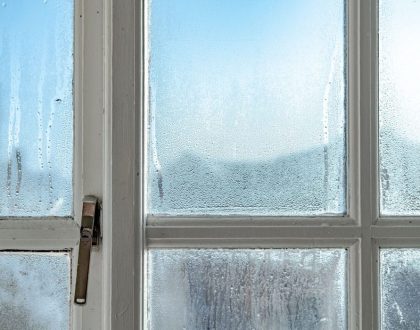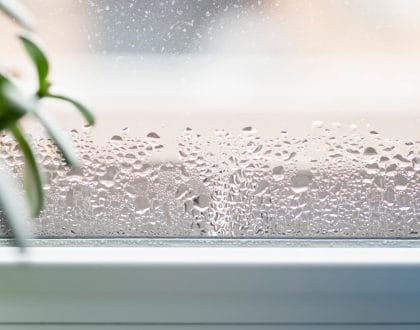Condensation Risk Analysis Systems

What is Condensation Risk Analysis
Condensation risk analysis is one way of understanding the risk of condensation in, or on a building structure. Because buildings are becoming more thermally efficient and airtight in order to meet current energy standards, condensation is more likely.
The two types of condensation they mainly screen against are:
- Surface Condensation: This is the visible condensation that forms on cold surfaces, such as windows or walls. It can quite often lead to mould, which is unhealthy for the occupants and will ruin walls. It often happens at “thermal bridges” where there is a simpler heat loss, leading to cold spots.
- Interstitial Condensation: This is the more extreme, “hidden” type of condensation that occurs between building structure layers, such as in walls or roofs. It is formed when warm moist air enters the structure and condenses on coming into contact with a cold surface within the building. Allowing it to go unchecked, this type of condensation has the potential to lead to rot, loss of insulation efficiency, and potentially even structural damage or collapse.
Understanding Condensation
Condensation occurs where warm, moist air comes into contact with a cold surface, causing the water vapour in the air to cool and condense into water droplets. This commonly occurs on window glass, especially on a cold day.
The warm air has a higher content of moisture than cold air. When warm air is cooled down by cold surfaces, such as single-glazed windows, the air is no longer capable of holding the same amount of water vapour. The extra moisture will form condensation.
Condensation on Single-Glazed Windows
Single-glazed windows are prone to condensation because the internal surface of the glass is often as cold as the external environment. As a result, warm, moisture-laden indoor air that contacts the glass surface quickly cools, forming condensation.
Secondary Glazing – A Solution
Secondary glazing acts as a barrier and thermal insulator, significantly reducing the risk of condensation by creating a cavity of trapped air between the primary window and the secondary pane.
Key Benefits of Secondary Glazing
- Reduces the temperature differential on internal glass surfaces.
- Limits direct contact between warm room air and cold glass.
- Provides controlled ventilation, balancing humidity levels inside the cavity.
- Minimises condensation on both the primary and secondary panes.
Condensation Risk Mitigation – By Window Type
Secondary Glazing with Single-Glazed Primary Windows
Strategy:
- Ensure the secondary glazing frame and the glazing itself are sealed as airtight as possible.
Effect:
- The inner surface (secondary glass) is warmer and less likely to develop condensation.
- The cavity air remains stable, reducing the likelihood of condensation on the primary glass.
Secondary Glazing with Double-Glazed Primary Windows
Strategy:
- When primary windows are already well sealed or double-glazed, moisture can become trapped in the cavity.
- To avoid this, a trickle vent should be installed into the secondary glazing to allow excess moisture to escape.
Effect:
- Prevents the cavity between the double-glazed unit and the secondary glazing from becoming a condensation trap.
- Helps maintain balanced humidity within the cavity.
What Else to Consider
- Outside condensation on the primary window could be greater if secondary glazing is installed, since less indoor heat transfer takes place. This is not a defect and is most often no problem.
- Condensation inside the primary glazing will only occur if there is air leakage—either outside humid air entering through a compromised primary seal or indoor humid air passing through the secondary seal.
Should You Get Secondary Glazing?
If you’re having issues with condensation in your residential or commercial property, then secondary glazing is a cost-effective option to help improve and almost eliminate it. You can get a free online quote from us to see how much it will cost to reduce the condensation of your property before it starts to impact your health or your building’s structure.
Recommended Posts

How can I stop condensation?
06/02/2024

Why Are My Windows Wet Every Morning?
07/01/2021

